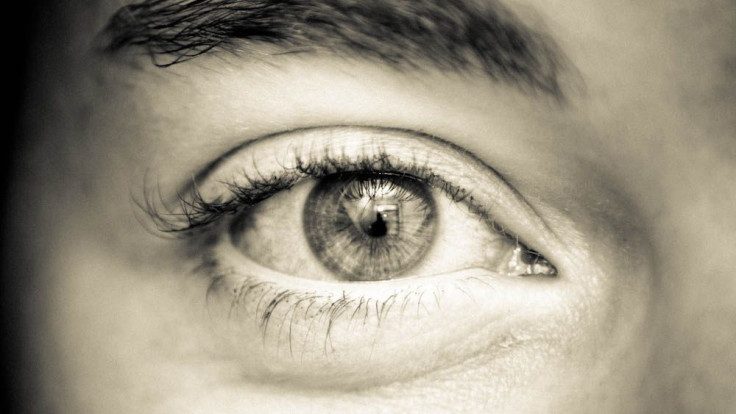The Mind’s Hidden Censor: ‘Selective Selectivity’ And What Your Unconscious Bias Won’t Let You See

A video has circulated around the Internet for some time now: the watcher is asked to count the number of passes made between a pretzel of actors as they weave between one another, tossing basketballs back and forth. At the end of the video, as promised, the number of passes is plainly revealed on screen, leaving the watcher perplexed as to what the fuss was all about: sixteen, of course.
"Did you spot the gorilla?" it then asks. The video rewinds and sure enough, midway through, a gorilla walks on stage, beats its chest, and promptly exits stage right. About two-thirds of the people will never see the gorilla, a phenomenon Daniel Simons has since called "The Monkey Business Illusion" (MBI).
Numerous studies have bolstered the findings presented in the MBI, that our attention as humans works as something of a spotlight. We "shine" our attention on one thing, only to leave other things temporarily in the dark. This makes evolutionary sense. To avoid becoming another animal's lunch, we needed to attune our senses and focus all of our attention to that rustle in the grass. The singing birds become less important, even less apparent, in the face of clear and present danger.
We have since evolved out of the food chain, of course, so the primal need for survival has nuanced to fit modern times. Dr. Keith Payne, a researcher in social cognition from the University of North Carolina at Chapel Hill, says selective attention doesn't tell the full story anymore.
Payne opts instead for "selective selectivity," or the process our brains undergo during decision-making where we unconsciously decide what to see and what to ignore. The MBI relies on the pre-determined instruction not to focus on anything but the players. When a gorilla passes through the shot, our brain ignores that visual data — effectively blinding us — to concentrate on what the video told us was more important.
Payne's research now says our subconscious tells us what's more important all the time, selecting for us what we see and ignore.
To study his theory, Payne and his colleagues devised an experiment to test participants' range of racial bias. They used the original footage Daniel Simons based the MBI on, a shadowy black and white video by psychologist and cognitive scientist Ulric Neisser, in which a woman with an umbrella — not a man in a gorilla suit — passes through a swarm of basketball players. Payne's team superimposed onto that footage either a black man or white man walking across the screen. From there they posed a simple question: who would people notice more? The team hypothesized the answer would be based on the user's present goals.
To measure this, they asked a group of white women to browse online dating profiles. One group was told to look for a co-worker or neighbor, while the other group was told to browse for a friend or a date. While each was browsing, however, Payne's team interrupted the women in order to test their level of concentration. They showed them the video.
Leaning on previous studies that point to greater racial bias at closer social distances, Payne wondered if the women would display prejudices according to their social distance.
"For instance, polls show that whites are more likely to support equality for black Americans at a distance (such as saying that they support integrated neighborhoods and workplaces) than to support close personal ties (such as saying that they approve of someone in their family having an inter-racial marriage)," Payne wrote in Scientific American, "Although attitudes toward all of these topics have become steadily less prejudiced since the 1960's, the gap between close and far social distances has remained remarkably constant."
Given this predisposition, Payne asked whether the women would unconsciously see the white man more often when they were searching for matches for themselves. He predicted the women's selective selectivity would filter out those men whom they saw as less desirable for themselves, but keep those whom they saw befitting for others.
After both groups watched the video — two-thirds never saw the men walking — the team asked the women if they had seen anything other than the basketball players.
"As we suspected, who they saw depended on what they had on their minds," wrote Payne. "When the women were set to look for a suitable neighbor or co-worker they saw the black man and the white man equally often. But when they were looking for a friend or a date, they noticed the white man more than twice as often as the black man. The unconscious screener seemed to have racial preferences, but there was not a simple bias to see only whites or only blacks. The women were unconsciously deciding whether the man in the video was the kind of guy they were looking for."
Payne's findings illuminate a startling aspect of our unconscious, one that he calls "disquieting" because there is a "power asymmetry" at work. Our unconscious brain dominates our conscious brain. We may become alert to the unconscious brain eventually, but by then, Payne said, it may be too late.
He prescribes more interaction with different races, at least as it pertains to the study that he and his team carried out. Eliminating the unconscious bias of social distance starts with decreasing that distance. And in a world dominated by the reliance on auto-fill, auto-correct, and automated automobiles, we forget to reflect on where we shine our spotlight.
"The power of the unconscious is greatest when our attention is under the heaviest demands," Payne said. "In today's multitasking world, when we split our attention between Facebook and real friends, between our kindles and our kids, between our laptops and our loved ones, we delegate ever more to the unconscious. It makes you wonder who you have looked at today and have not seen."



























